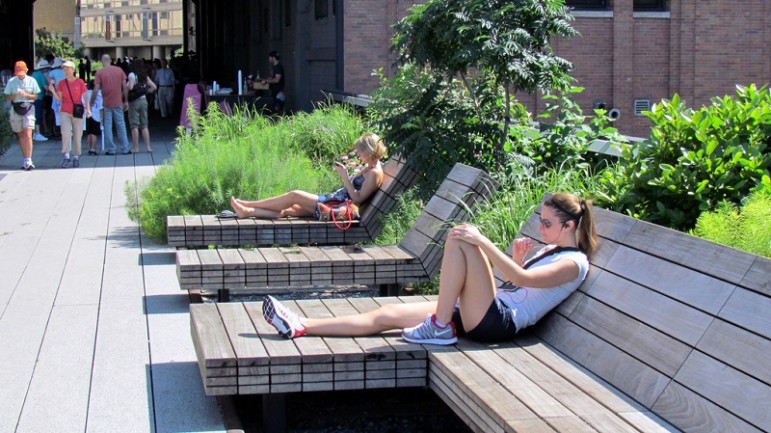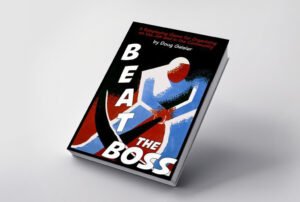
December 17, 2015; Vulture.com
Street and public art is having a heyday here and abroad, thriving in once-desolate parts of cities. And while it’s exciting to see an art form that harkens back millennia to the cave paintings in Lascaux, France, there’s a question of whether its power and its artists are being coopted by gentrification.
New York Magazine senior art critic Jerry Saltz is quoted in Vulture as saying he worries that the cultural forces responsible for “something like a new golden age of public art,” also support soulless and synthetic art and architecture that he loathes. And UK curator and author of The World Atlas of Street Art and Graffiti, Rafael Schäcter, prompted a flurry of discussion last month on the site The Conversation when he claimed that street art has moved from “dissident to decorative,” and sold out.
Schäcter explained in his piece, “Street art—as well as its artistic forebear graffiti—are often thought of as radical, rebellious aesthetic practices. Both the artists and their works are portrayed as the very definition of “edgy”; dangerous and dissident, but also creative and avant-garde. Yet within the last five years or so, street art…has been commandeered by the corporate interests of the ‘creative city’.”
Schäcter describes the creative city doctrine as “one in which public space is privatized and monetized.” City authorities in these cases look to “draw the emerging creative class to their sites” by marking themselves out “visually and recreationally to entice the key demographic of well-educated professionals and ‘bohemians’ (the coders, the designers, the “knowledge-based” professionals) who form the basis for a post-industrial economy.”
At or near the top of Saltz’s list of offenses in New York City is the High Line project, which he calls “that stretch of elevated rail lines strung through the Meatpacking District, West Chelsea, and the Hudson Yards, refurbished with private money a dozen years ago as the spine of the massive luxury redevelopment of each of those neighborhoods.” The mile-long public park, which snakes over and across a section of New York has, since it opened in June 2009, “had more than 27 million visitors.” And with annual attendance in excess of 6 million, it’s more popular than the city’s Museum of Modern Art or Metropolitan Museum of Art. Now developers have even more ambitious projects for art and entertainment centers to construct at either end of the High Line—Pier 55, at the southern end of the High Line, and the even bigger Culture Shed, at the northern one.
Saltz is not at all a fan, and he can envision problems of epic scale for these centers, the larger of which he calls a behemoth projected to cover 200,000 square feet (roughly the size of 3.5 NFL football fields). “The hubris of all this will be how costly these spaces are to build and maintain—predicated as they are on the belief that there will always be enough money for crews and equipment to come in at night and restore them for the next day’s audiences and merrymakers,” Saltz said. “It’s fitting that when this cycle of abundance recedes, these caprices may become the very “ruins” that inspired them.”
Saltz envisions the following dilemma: having new opportunities for putting art in the public sphere is good, but the creation of environments that mix experiencing art with planned programming and entertainment may change the dynamic in ways that aren’t beneficial.
Sign up for our free newsletters
Subscribe to NPQ's newsletters to have our top stories delivered directly to your inbox.
By signing up, you agree to our privacy policy and terms of use, and to receive messages from NPQ and our partners.
He sees the High Line as a “harbinger of a bad pathogen now transforming public space into fussy, extra-busy, overdesigned, high-maintenance mannered playgrounds, curated experiences, and crowd-pleasing spectacles.” He admits that the “semi-privatization of public space has produced some of the best public art the city has seen in decades,” but at the same time he worries that “the money people who make major projects happen” are too interconnected.”
For his part, Schäcter believes this “transformation is due, in part, to the steady rise of the street-art festival. From Miami to Manila, these festivals have given institutions a way to establish the ultimate delivery system for creative city policies. They make and market “place”, turning physical space into a branded commodity. The “edgy authenticity” of street art makes it the ideal fit for this task: it is just perfectly, marvelously edgy enough.”
He continues,
“Much of the street art pumped out through the festival apparatus provides an aesthetic of transgression, while remaining perfectly numb to the social realities of its setting, treating public space like a blank canvas, rather than a site already loaded with cultural, historical and personal significance.
“It appears political while in fact being perfectly non-partisan. It performs a charade of rebellion and insurgence, while being officially sanctioned by commission and invitation.”
It’s not hard to see just how mainstream “street art” has come. One has only to look to Madison Avenue, which has just come up with an Instagram campaign for the color-trend-setting company Pantone. To gain consumer awareness for its #ColorOfTheYear (actually two colors this year), it’s having street artists “with large social followings in Los Angeles, New York City and Miami” create art installations to “showcase the colors’ harmony and their dominance in fashion, art and design.”
And in Toronto, a children’s art studio just announced it will be offering “Express Yo Self,” graffiti classes for kids, to introduce them to street-art techniques. Purists will certainly find this unsettling. — Susan Raab












